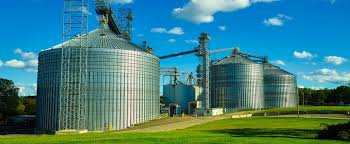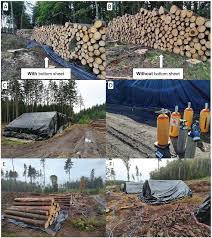Fumigants are used in various formulations and dosages according to the nature of the commodities and pests involved.
Factors that modify fumigant effectiveness that must be considered when selecting a formulation include the following: i) pests to be controlled, ii) temperature, iii) moisture, iv) structure to be fumigated, and v) method of application.
1. Pests to be controlled
A pest’s susceptibility to fumigants depends on the species, its stage of development, and its habitat. Generally, fumigant gases reach the insects’ tissues through the respiratory system. Most insects breathe through a series of openings, called spiracles, in the outer skeleton.
Once inside the insect’s body, oxygen from the air and fumigant gases are diffused through the insect’s thin cell membranes. Some primitive insects and mites, close relatives of insects breathe by taking in air through the cuticle, which covers the whole body.
The life stage of the insect that is least active metabolically (e.g., pupae, hibernating adults) is the most difficult to kill by fumigation.
Fumigant labels give dosages needed for different species of insects and different life stages of those species. For this reason, a fumigator should know some pest biology.
Insects that been fumigated with methyl bromide die slowly. At first, they may be unable to walk or fly normally.
They usually come to rest on their backs and eventually are unable to recover from that position; however, they may move their heads, legs, or antennae for as long as several days before they finally die.
2. Temperature
Sub-lethal concentrations of the fumigant gas may result if fumigation is done at abnormally high or low temperatures.
At low temperatures, the fumigant vapourizes and diffuses more slowly. Insect activity and metabolism are likewise slow.
These factors tend to retard killing action, especially at temperatures below 10°C (50°F); thus, at lower temperatures, higher dosages and longer exposure time must be used for a successful fumigation.
On the contrary, at excessively high temperatures, fumigants vapourize faster and may dissipate too soon for lethal concentrations to be maintained long enough to kill pests, especially if the seal of the fumigation site is not perfect.
In the range of normal fumigating temperatures (60° to 80°F), the fumigant concentration needed to kill a given stage of an insect species decreases with the rise in temperature. Death occurs faster in the higher end of the normal temperature range.
3. Moisture
Adequate moisture is required for release of the actual toxicant, phosphine, in aluminum phosphide and magnesium phosphide products. At relative humidities below 25%, or grain moisture below 10%,, release of phosphine requires more time.

Excessive moisture may interfere with fumigant action by reducing fumigant concentration within a commodity, or by retarding aeration during soil fumigation.
Read Also : Roles of Producers and Corporations in Waste Management
Do not fumigate extremely dry soils because a certain amount of moisture is needed so that weed seeds will germinate and can be killed while actively growing.
4. Air Movement
Fumigation should be carried out when there is little air movement. Regardless of how well the enclosure to be fumigated is sealed, wind can create problems due to leaks. Leaks in an enclosure are the single most likely cause for fumigation failures.
Structure, Site or Commodity
The most important step in a structural fumigation is the proper sealing of the structure the more tightly sealed the structure, the more efficient the fumigation.
Because wood is porous, wooden structures, even well- sealed ones, will not retain fumigant gases as well as those made of metal, plastic, masonry, or concrete. Cement blocks are also porous and likewise are a problem for efficient fumigation.
The loss of gas through diffusion into porous building materials can be compensated for by increasing dosage levels and exposure times.
Tarpaulin fumigation under gas proof sheet or cover is more effective than sealing a building with paper or tape and holding a fumigant within structural walls.
Tarpaulin fumigation has the advantage of reaching the exterior wood areas (doors, sills, etc.) which may be infested.
According to federal or state law, a pesticide label is a legal document, and use of a pesticide in a manner that is inconsistent with the label directions is illegal.
Thus, use a fumigant only on sites or commodities listed on the label, the other parts of the labeling, or the applicator’s manual. Product label directions discuss the factors that affect the fumigant’s efficiency on a particular commodity.
Ordinarily, a fumigant should not change the quality of or damage the treated commodity in any way, or leave any hazardous residue during processing of the commodity that could harm the consumer. In fumigation, as in any pesticide treatment of a raw agricultural commodity or packaged food product, the “tolerance” must be considered.
The tolerance, or tolerated residue, is the amount of the pesticide’s active ingredient that is considered safe to consume and is legally permitted to remain in the commodity. Tolerances are expressed in parts per million, which is the same value as milligrams per kilogram (1000 grams).
Grain fumigation can be affected by type and condition of the grain: size, shape and permeability of the kernels, and the amount of dockage (chaff, dust, etc.) in the grain.
“Sorptive capacity” of stored grain refers to adsorption, the adhesion of the fumigant gas molecules to the external surface of the grain, plus absorption, the holding of gas molecules within the kernel by capillary action.
Other factors being constant, sorptive capacity of a grain increases with a decrease in kernel size and a corresponding increase in surface area. Permeability of seed coat is also a factor.
Increased sorptive capacity means less gas fumigant in the surrounding air, hence, recommended dosages are generally higher for smaller grains such as wheat, rye, or sorghum than they are for corn.
Methods of Application
Soil fumigants may be applied under a tarpaulin (methyl bromide products) or by chisel injection into the soil (Telone, Vorlex), according to label directions.
Solid space fumigants that release phosphine may be added directly as pellets or tablets to animal feed, feed ingredients, and raw agricultural commodities stored in bulk.
Commodities not stored in bulk (e.g., bagged) should be treated in the same way as processed foods; these should not come in contact with tablets, pellets or residual dust except for brewer’s rice, malt and corn grits for use in the manufacture of beer.
Safety Recommendations
The most dangerous and common route of exposure to fumigants is through inhalation. Most fumigants are highly toxic and can cause serious illness or death if small amounts are inhaled. Exposure also can occur through the eyes, mouth or skin. Below are the some of the safety recommendations for fumigators in terms of personnel and protective equipment.
Personnel
Assign at least two persons to each fumigation job and use a “buddy system” of at least two persons when a fumigated area must be entered.
Ensure that employees actively taking part in a fumigation are in good physical conditions. Fumigators should have;
(i) a physical examination at least once a year and more often if health conditions require such, while fumigation businesses should maintain up-to-date health records for each employee,
(ii) Abstain from alcoholic beverages and medical or recreational drugs for 24 hours before and after a fumigation job,
(iii) Not participate in a fumigation if they have colds or other respiratory problems that make breathing difficult, and
(iv) Not participate in a fumigation while undergoing continuing medical or dental treatments unless authorized to do so by the physician or dentist in charge.
Instruct all personnel in first aid and other emergency procedures, including personal decontamination.
Make sure fumigators understand the use of specific antidotes, first aid procedures and symptomatic relief measures.
Instruct employees to report all accidents immediately to the employer or supervisor. Caution personnel to report all indications of illness or physical discomfort regardless of their apparent minor nature. Signs of illness may include but not be restricted to any or all of the following: dizziness, diarrhea, nausea, headaches and lack of coordination.
Make sure employees understand the hazards that may be encountered because of carelessness or misuse of fumigants.
Teach employees in the selection, operation, and maintenance of all protective equipment and safety procedures required by the fumigant of choice.
Protective Equipment
Fumigators must use protective equipment to prevent injury or loss of life if they are likely to be exposed to gas levels above the allowable limits. It is necessary to follow exactly the label recommendations concerning specific protective equipment and clothing for each fumigant product.
Label requirements for protective clothing and equipment are related to threshold concentrations of the fumigants in fumigated spaces. Therefore, fumigators need reliable detection devices to ensure health and safety of personnel, as well as to comply with the law, because the pesticide label is a legal document.
Read Also : Soil Fumigation, Importance and Types of Fumigation
If the fumigant concentration in the fumigated area, as measured by a direct reading detector device, is above the threshold concentration specified by regulation for that fumigant, all persons in the area must wear the protective equipment specified on the label.
Respiratory protection must be available at the site of application in case it is needed when applying aluminum phosphide within a structure; it does not have to be available for outdoor applications.



